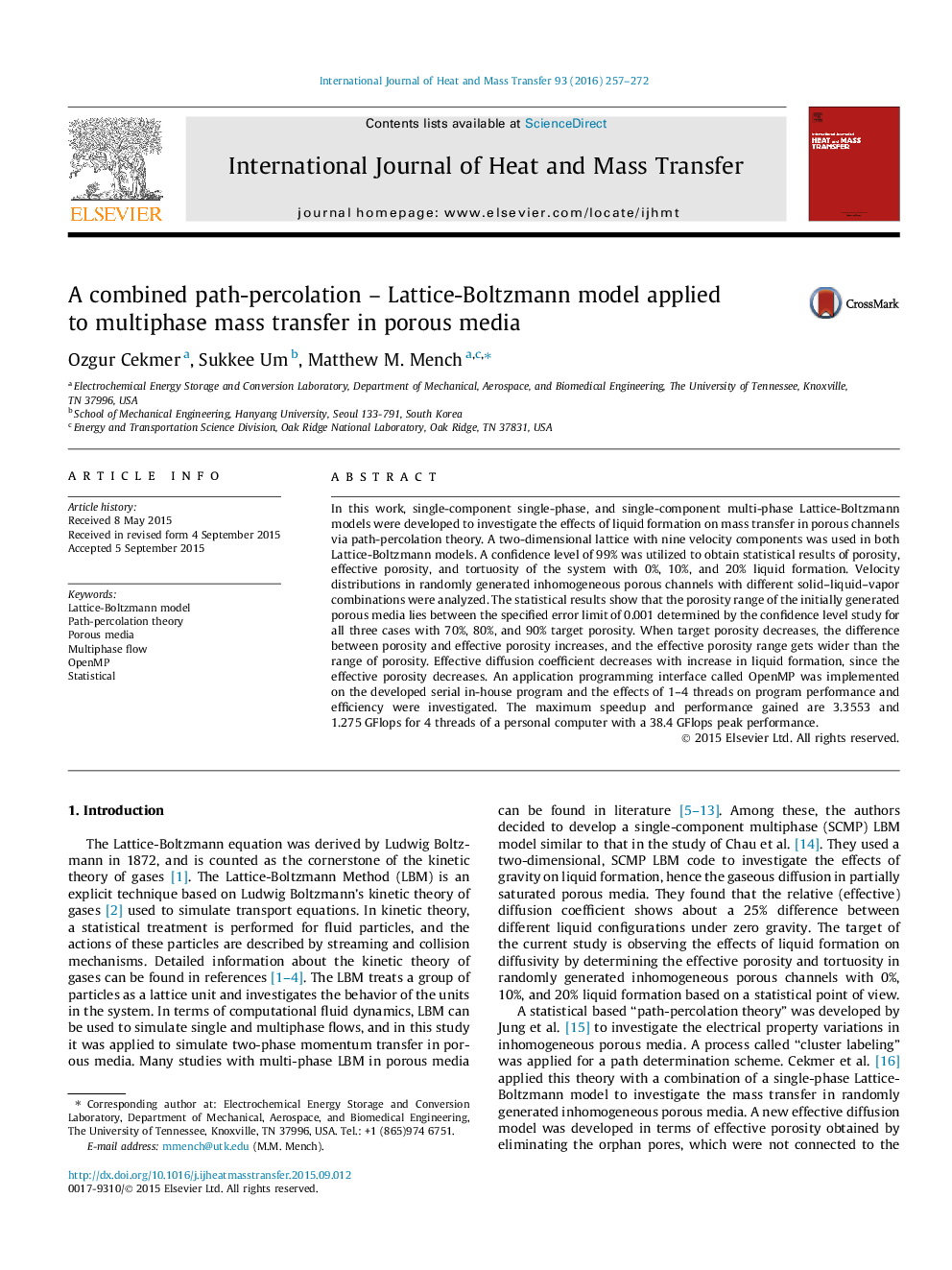| Article ID | Journal | Published Year | Pages | File Type |
|---|---|---|---|---|
| 7056062 | International Journal of Heat and Mass Transfer | 2016 | 16 Pages |
Abstract
In this work, single-component single-phase, and single-component multi-phase Lattice-Boltzmann models were developed to investigate the effects of liquid formation on mass transfer in porous channels via path-percolation theory. A two-dimensional lattice with nine velocity components was used in both Lattice-Boltzmann models. A confidence level of 99% was utilized to obtain statistical results of porosity, effective porosity, and tortuosity of the system with 0%, 10%, and 20% liquid formation. Velocity distributions in randomly generated inhomogeneous porous channels with different solid-liquid-vapor combinations were analyzed. The statistical results show that the porosity range of the initially generated porous media lies between the specified error limit of 0.001 determined by the confidence level study for all three cases with 70%, 80%, and 90% target porosity. When target porosity decreases, the difference between porosity and effective porosity increases, and the effective porosity range gets wider than the range of porosity. Effective diffusion coefficient decreases with increase in liquid formation, since the effective porosity decreases. An application programming interface called OpenMP was implemented on the developed serial in-house program and the effects of 1-4 threads on program performance and efficiency were investigated. The maximum speedup and performance gained are 3.3553 and 1.275Â GFlops for 4 threads of a personal computer with a 38.4Â GFlops peak performance.
Related Topics
Physical Sciences and Engineering
Chemical Engineering
Fluid Flow and Transfer Processes
Authors
Ozgur Cekmer, Sukkee Um, Matthew M. Mench,
